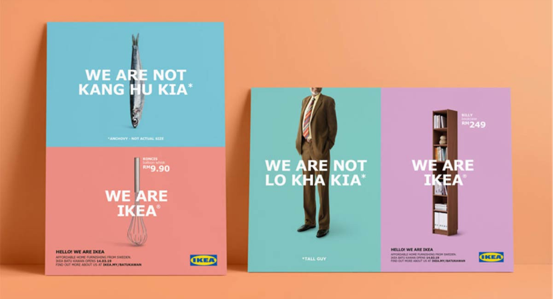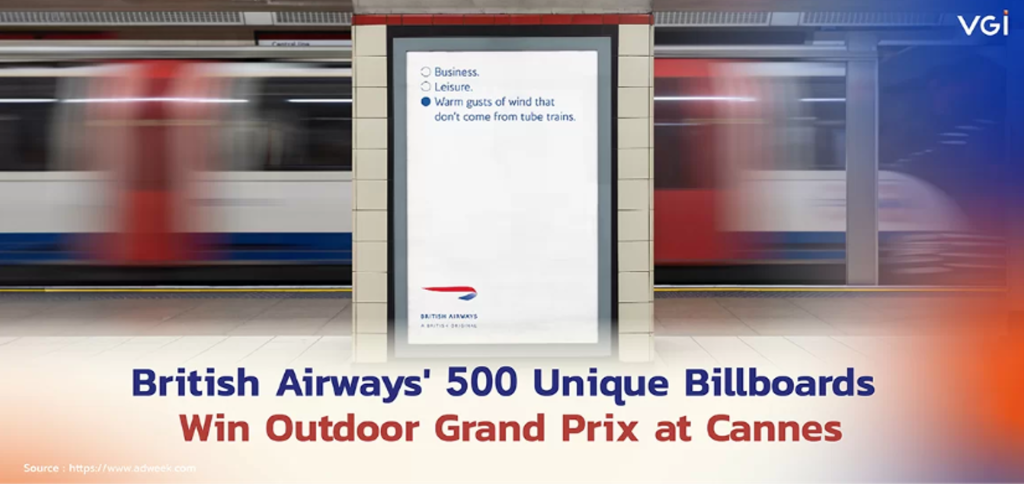In the bustling heart of Mumbai, as the monsoon rains descended, something extraordinary happened. A billboard, typically a static display of advertisements, began to sing. Not just any song, but the classical Indian musical composition ‘Raag Megh Malhar,’ traditionally associated with the monsoon season. This wasn’t some divine phenomenon; it was Taj Mahal Tea, in collaboration with Ogilvy India, demonstrating the profound power of localized content. Their “Megh Santoor” billboard, recognized by the Guinness World Record as being the largest of its kind, managed to both capture the attention of and resonate deeply with the local audience by embracing a cherished cultural moment.
This example perfectly encapsulates the evolving landscape of brand marketing, especially when it comes to summer festivals and events. In an increasingly globalized world, the ability to connect with diverse regional audiences on a deeply personal and culturally relevant level has become paramount. As 2025 cruises on, brands are recognizing that generic campaigns no longer suffice. The key to maximizing local relevance lies in understanding and adapting to the unique nuances of each community.
Why Localization Matters More Than Ever
In today’s globalized world, the importance of localization in brand marketing cannot be overstated. It is crucial to deliver cultural adaptation that resonates with the target audience. This is why localized marketing for summer events is becoming a central strategy for brands aiming to resonate with diverse audiences. A significant factor driving this trend is consumer preference for native language content. Studies show that a staggering 75% of users prefer content in their native language, and a substantial 40% are disinclined to purchase from websites that aren’t localized. This highlights a clear consumer expectation: brands that speak their language, literally and figuratively, are more likely to capture their attention and trust.
Beyond language, cultural relevance plays a pivotal role in driving engagement. Localized campaigns consistently outperform generic ones in terms of conversion and click-through rates. This is because culturally relevant content feels authentic and relatable, fostering a stronger connection between the brand and the consumer. When brands invest in understanding and incorporating local customs, traditions, and values into their marketing efforts, they build authenticity and trust. This approach helps brands appear more community-focused and trustworthy, moving beyond a transactional relationship to one built on shared understanding and respect.
Emerging Trends in Localized Content for Summer 2025
In 2025, several key trends are emerging in localized content for summer events, all pointing towards more personalized, immersive, and community-centric experiences.
Hyper-personalization
One significant trend is the rise of hyper-personalized experiences, often driven by artificial intelligence. AI is enabling customized agendas and content recommendations at events, tailoring the experience to individual preferences. This level of personalization extends to advertising, with localized mobile ads demonstrating a 22% higher conversion rate compared to English-only ones [Adotas], underscoring the effectiveness of targeted content. These innovations are part of broader event marketing trends shaping 2025, where data-driven personalization is no longer optional.
Experiential marketing
Another prominent trend is the focus on immersive and experiential marketing. Brands are moving beyond traditional advertising to create engaging, hands-on experiences. This includes the rise of experiential learning and workshops, as well as interactive and sensory-rich environments like themed pop-ups and tactile installations. These experiences allow consumers to connect with brands on a deeper, more memorable level.
Micro-events
Community-centric micro-events are also gaining traction. This involves the growth of niche music festivals and intimate gatherings, where local storytelling and grassroots engagement become key differentiators. These smaller-scale events foster a sense of belonging and allow brands to connect with specific communities in a more authentic way.
Digital technology
Technology continues to play a crucial role in enhancing localization. The use of Augmented Reality (AR) and Virtual Reality (VR) is expanding, offering real-time translation tools to localize event experiences. Furthermore, platforms like TikTok are becoming increasingly important as discovery and engagement tools for Gen Z, highlighting the need for brands to adapt their content strategies to these dynamic digital spaces.
Sustainability
Finally, sustainability and inclusivity are becoming non-negotiable aspects of localized content. Events are increasingly focusing on local sourcing, eco-conscious practices, and inclusive programming. This also involves ensuring that events reflect regional values and dietary preferences, demonstrating a commitment to the community and its diverse needs.
How Brands Are Localizing for Summer Events
Brands are increasingly demonstrating innovative approaches to localization, moving beyond simple translation to truly embed themselves within local cultures and contexts. Several compelling case studies highlight this shift:
- IKEA Penang Store Launch: For its store opening in Penang, Malaysia, IKEA crafted a local marketing campaign that cleverly utilized the city’s Hokkien dialect. By incorporating phonetic similarities between popular Hokkien words and the word “IKEA,” they created humorous and culturally relevant messaging that paid tribute to local culture and fostered a strong connection with residents.

- Tiger Beer’s “Our roar, Our Way”: In March 2025, Tiger Beer launched its SG60 campaign titled “Our Roar, Our Way”, a cinematic celebration of Singaporean identity. The brand challenged stereotypes—like being “boring” or “kiasu”—by showcasing real, culturally resonant moments: friends dancing in a barbershop, tattooed men bonding with office workers at a hawker center, and an interracial wedding blending Indian and Chinese traditions. Backed by a locally produced soundtrack featuring rapper Aditya Mirchandi Rodrigues and directed by Singaporean filmmaker Salihin Ramli, the campaign struck a chord with audiences by embracing the quiet strength and diversity of Singaporeans.
- British Airways’ Location-Specific Messaging: British Airways effectively used hyperlocal ad variations, tailoring their messaging to specific locations and even weather conditions. This approach made their advertising more relevant and engaging for diverse audiences, demonstrating an understanding of local contexts.

In the realm of music festivals, localization is also taking center stage. Brands are increasingly focusing on genre-specific and artist-themed events that are carefully tailored to local fan bases. This includes integrating wellness initiatives and social causes, reflecting the values and interests of younger generations, particularly Gen Z. By aligning with local tastes and social consciousness, brands can create more meaningful and impactful experiences at these events.
Best Practices for Localizing Summer Event Content
To effectively localize content for summer events and festivals, brands should adopt a strategic and culturally sensitive approach. Here are some best practices:
- Conduct Deep Cultural Research: A thorough understanding of local customs, dialects, values, and traditions is fundamental. This goes beyond surface-level observations and requires delving into the nuances of local life to ensure content is not only accurate but also respectful and resonant.
- Collaborate with Local Creators: Partnering with local influencers, artists, and community leaders can significantly enhance authenticity. These collaborations provide invaluable insights into local preferences and help brands connect with audiences through trusted voices.
- Use Localized Visuals and Language: Adapt imagery, tone, and messaging to align with local aesthetics and communication styles. This includes everything from color palettes and graphic design to the specific vocabulary and humor used in marketing materials.
- Test and Iterate: Before scaling localized campaigns, it’s crucial to pilot them in smaller markets and gather feedback. This iterative process allows brands to refine their strategies, identify what works best, and make necessary adjustments to maximize impact and avoid cultural missteps.
Conclusion
The era of one-size-fits-all marketing is rapidly fading, especially in the dynamic landscape of summer festivals and events. Localization is no longer an optional add-on; it has become an essential strategy for brands seeking meaningful engagement with their target audiences. This summer and beyond, the brands that will truly stand out in the crowded event landscape are those that embrace regional nuances, respect cultural values, and actively integrate themselves into the communities they serve.
From hyper-personalized experiences driven by AI to community-centric micro-events and tech-enhanced localization, the trends clearly indicate a shift towards deeper, more authentic connections.
Ready to elevate your summer marketing campaign and forge unforgettable connections with local audiences? Let’s talk about how you can tailor your content strategy to resonate with regional preferences and maximize your impact. Contact us today to start building truly authentic, locally relevant experiences that leave a lasting impression.



